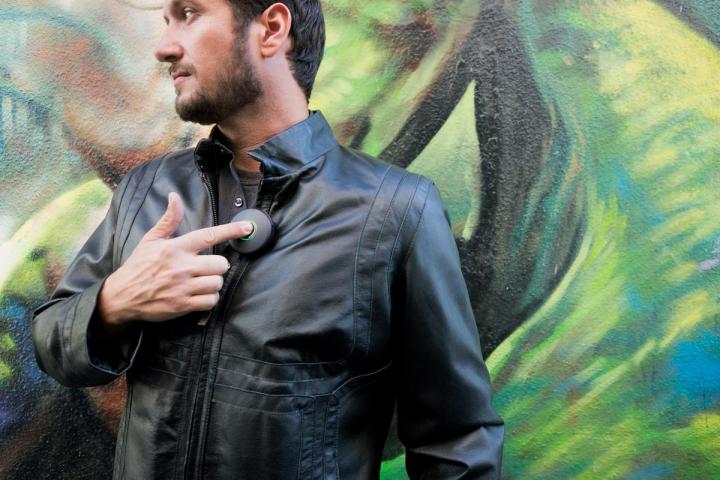
Operating on a private network, the Onyx links to an iOS or Android smartphone over Bluetooth and sends voice messages using a Wi-Fi connection or the phone’s LTE data connection. Just as Star Trek characters do, the user taps the device to initiate communication before speaking. At just 2.36 inches in diameter, the Onyx is small enough to clip to a shirt and weighs less than 2 ounces.
Interestingly, there’s no limit to the number of people in a group that could communicate with Onyx devices. As they do with traditional walkie-talkies, Onyx users will likely have to remain silent while another party is speaking into their device. Within the app interface, users can view who is available on the private network as well as check the locations of all active users on a map.
The location feature could be highly useful when traveling in a group that’s split up in separate vehicles. It would also be useful in a large venue, like a concert arena or a theme park. Hypothetically, the devices could also be rolled out at a company-wide enterprise level, perhaps ideal for multiple employees attending a large trade show or even for employees that work remotely in another city.

The device uses a simple LED light ring to indicate an Onyx user’s availability. Blue means he’s free, yellow means the device is currently muted, and green means the person is talking. Those colors also appear in the app interface with the user’s name and picture, definitely ideal for keeping track of who’s speaking within a large group of people at any given time. The mobile application also lets users hop between groups in order to communicate with a smaller subset of people for private conversations.
The lithium polymer battery within the Onyx can be charged over micro-USB and is rated to last approximately 12 hours. There’s also a headphone jack on the device if you would prefer to keep the conversation private, intended for use in a public setting such as a daily commute on public transportation. Regarding compatibility, the Onyx will work with all Android devices operating on version 4.1 and up as well as the iPhone 4S and above on iOS 7 or higher.
OnBeep, the company that created the Onyx, is pushing forward on an initial production run and claims it will beam the first Onyx devices (see what we did there?) into the hands of consumers by December 2014. At the moment, the Onyx only comes in black. Regarding the initial price of the communication device, a single Onyx can be preordered for $99 or two of the devices can be preordered for $195.
If you’re interested in the Onyx, be aware that delays in manufacturing often push the delivery date of crowd-funded products beyond original shipping estimates. Let the buyer beware — and also the Romulans.


